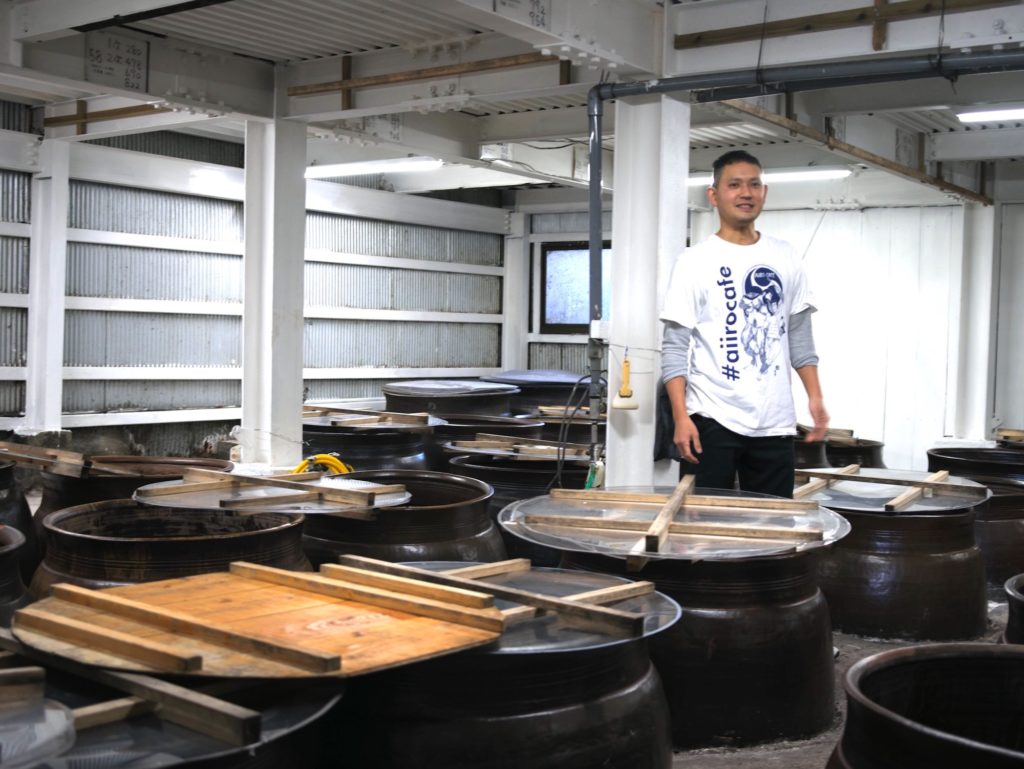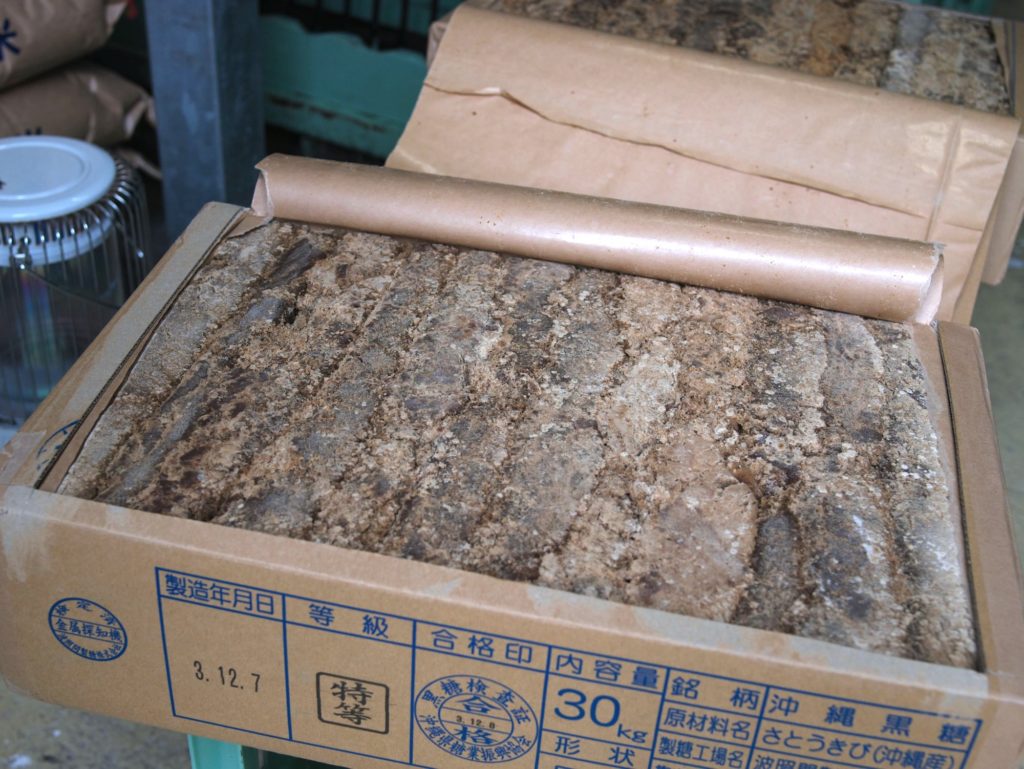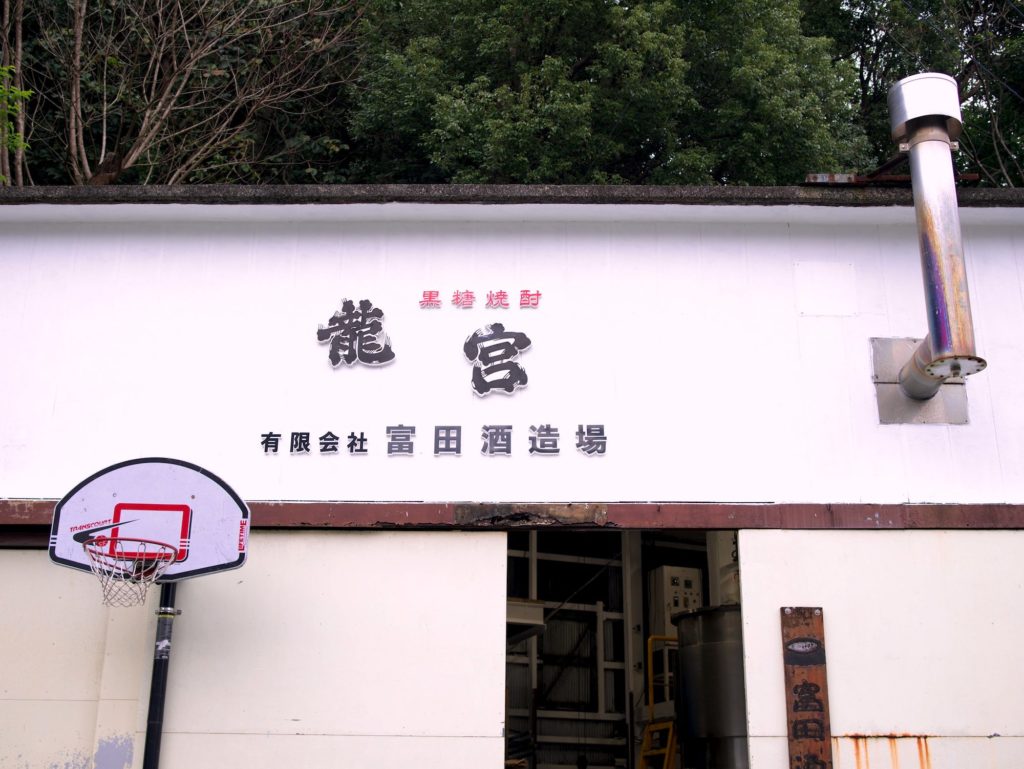Amami boasts a rare specialty liquor—kokuto shochu, distilled from brown sugar. In 1953, when the Amami Islands were returned from US military rule to Japan, a special provision was added to the Liquor Tax Act authorizing production exclusively to distilleries in the Amami Islands. Only 27 distilleries dotting the islands continue their operations today, and each pours its creativity into making truly unique, singular labels of kokuto shochu.
Just off Yanigawa Street in Naze, in downtown Amami Oshima, is one such distillery. Tomita Shuzojo, founded in 1951, commands a sweeping view of the cityscape and the ocean beyond from its perch at the foot of Mt. Rankan. Since the location doesn’t allow for extension and reconstruction, Tomita Shuzojo is the smallest distillery in the Amami Islands. But it takes advantage of its numerous strengths to produce delectable kokuto shochu, starting with its signature label Ryugu.

One strength is traditional earthenware pots. Kokuto shochu has a distinct production process in which koji (malted rice) is made in the primary preparation stage, and brown sugar is added in the secondary stage. Fermentation generally takes place in large tanks. Tomita Shuzojo, however, starts the primary stage with large pots buried in the ground. The fourth-generation proprietor, Masayuki Tomita, explains why:
“Our earthenware pots have been in use since my grandfather’s generation. We decided to keep on using them, and over time, that came to define our unique flavor. Because the Amami area is prone to typhoons and rain and wind, many kokuto shochu producers—including us—have buildings of steel construction. Sake breweries generally prefer wooden construction because it helps to cultivate the producer’s distinct yeast. Steel isn’t an ideal environment for yeast to grow, but earthenware pots are. We’ve been using the same pots for seventy years, and that’s what makes our flavor unique and inimitable.”

Tomita Shuzojo has too many strengths to list them all, but here are a couple more examples. Where shochu production generally uses white koji mold, Tomita uses a native black koji mold, which produces a rougher taste. And where kokuto shochu production generally uses rice grown in Thailand, Tomita makes the unusual choice of using ordinary white rice grown in Kagoshima Prefecture for its malted rice, so that the finished product retains hints of the natural taste and depth of rice.
“Shochu beginners typically start with sweet potato or barley shochu, and finally arrive at kokuto shochu. But the soft, round taste of kokuto shochu actually makes it perfect for novices. Even people who aren’t fans of shochu often find that kokuto shochu is palatable. Ideally, kokuto shochu should be more widely enjoyed as an introductory shochu, but I have a feeling that the law limiting production to this area is limiting recognition of the drink too. Personally, I’m for deregulation. More producers and more competition would ultimately help promote kokuto shochu.”

Tomita reserves a corner of the distillery for vintage shochu undergoing long-term aging. Aging in wooden barrels gives kokuto shochu a strong aroma and a complex, rich flavor. If left to age until the color turns darker than the standard prescribed by the Liquor Tax Act, however, the liquor will fall under the spirit category and cannot be shipped as shochu. In other words, the shochu aging in these barrels isn’t for sale.
“With aging, kokuto shochu acquires a depth unlike any foreign liquor. If only the color standard were scrapped, it would expand the possibilities of kokuto shochu. Our aged shochu won’t see the light of day right now, but I’m preparing for deregulation by making one or two new barrels of shochu each year.”
Tomita sells a small amount of unprocessed shochu aged in wooden barrels up to the color limit and an alcohol content of 40% under the label Ryugu Kohaku (kohaku means “amber”). With the subtly sweet fragrance of the barrel and a spicy flavor, the habit-forming shochu is packed with the strengths of a distillery open to change and looking toward the future.

Tomita Shuzojo
7-8 Naze Irifune-cho, Amami-shi
TEL:0997-52-0043












